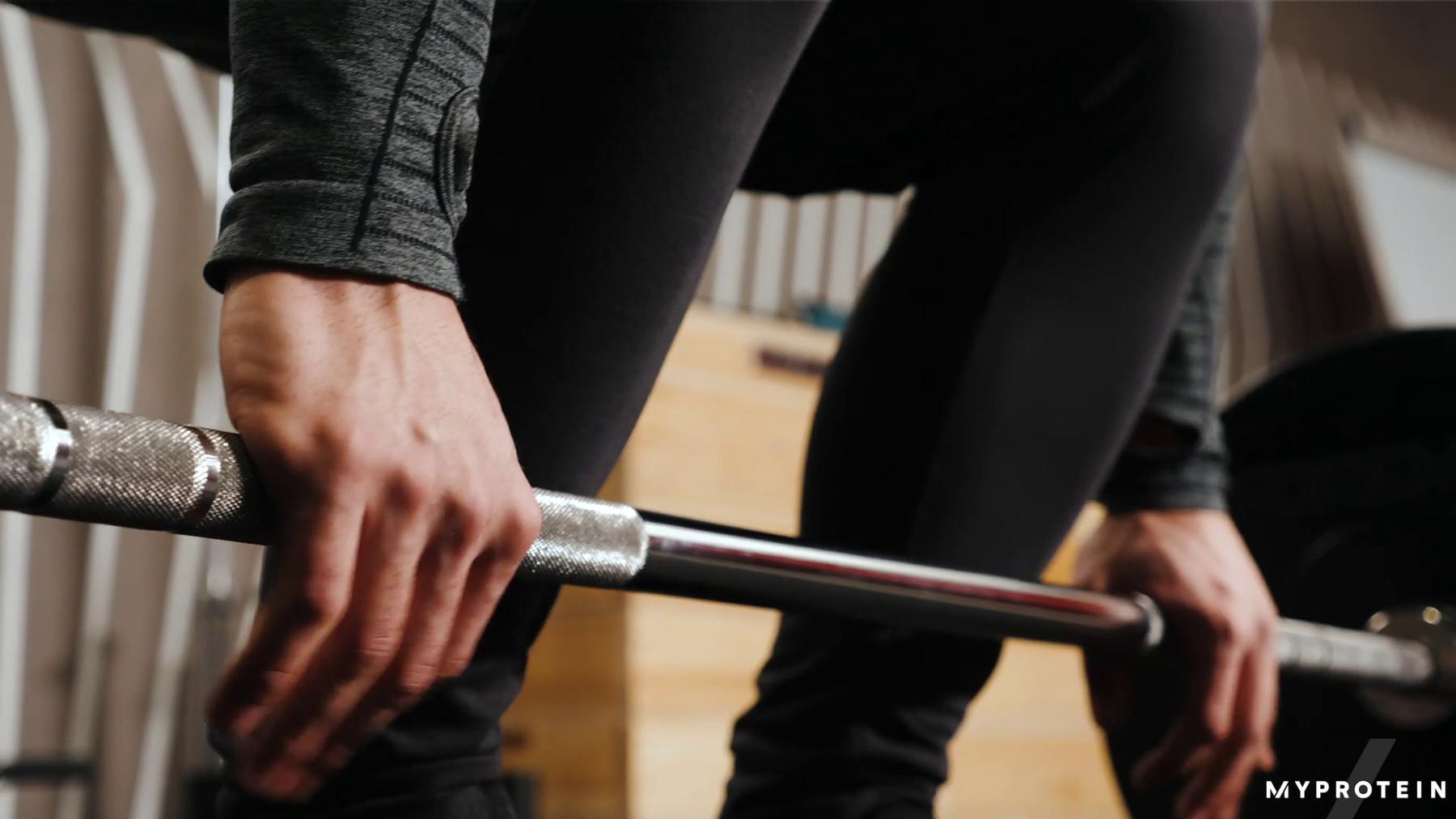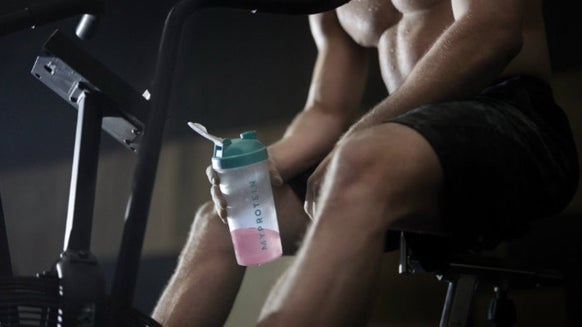How To Do Bent-Over Barbell Rows | Benefits & Technique

Do you want to build a bigger and stronger back? There are several ways of doing this but one of the best is the barbell bent-over row.
The back muscles are some of the biggest on the body, so it’s important to focus on powerful movements to target them while maintaining the correct form and technique.
What is a barbell bent-over row?
Barbell bent-over rows are a great exercise for building a bigger, stronger back and perfect for anyone looking to improve their squats, deadlifts and bench press.
Considered to be one of the original big-muscle moves, this compound exercise requires you to pick the barbell off the floor, while bending forward and lifting the bar towards your sternum. Your knees should be bent, with your back staying straight, and neck in line with the spine. Your grip should just be slightly wider than shoulder-width apart.
The bent-over position can potentially cause a little discomfort or even risk of injury, so it's important to use proper form. The form is extremely important with bent-over dumbbell rows, so it’s vital you choose the right amount of weight. You’ll benefit much more from slow and controlled movements.

Bent-over row benefits and the muscles trained
This is one of the best exercises to maximise muscle growth and increase pulling strength in the upper body, not to mention the effects it will have on your physique.
The main muscles used are the latissimus dorsi (lats), which run down the sides of your upper back, trapezius (traps), and rhomboids (upper middle back). The barbell bent-over row also uses the back, glutes and legs to stabilise the body too. It’s a powerful movement, so a don’t be surprised to see improvements in your other lifts.
Barbell Grips
When performing bent-over rows you can either have your hands in a pronated (palms facing down) or supinated (palms facing up) position.
A supinated grip will incorporate more of your biceps into the movement, meaning you can hold the bar at a narrower angle — and lift slightly heavier.
By pronating your grip, you’ll make the rhomboids and lats work harder. You’ll also be able to use a wider angle to place further emphasis on the lats and help develop those back muscles.
The grip variation you choose to use is entirely up to you. You should choose the method most comfortable and suitable for your goals. We’re going to focus on pronated grips for the ultimate back-building workout.
How to perform a barbell bent-over row
https://youtu.be/l1hZkB37X_8
1. Hold a barbell with a pronated grip (palms facing down). Your feet should be shoulder-width apart.
2. Bend your knees and bring your torso forward slightly. Your back should be straight and almost parallel to the floor. This is your starting position.
3. Lift the barbell up towards your sternum, keeping your elbows tucked in and close to the body.
4. Pause and hold at the top of the movement, squeezing your back muscles.
5. Slowly lower the barbell back to the starting position.
6. Repeat for the desired amount of reps.
Tips:
- Pushing your hips back will help you to keep your back straight throughout the exercise
- Pulling your elbows behind you, rather than pulling the bar up will help activate your lats and keep everything tight.
- Pausing at the top of the exercise and squeezing your shoulder blades together is a great way of building your back and developing posture.
Common mistakes and how to fix them
Jerking the weight:
The most effective way to train is by controlling the weight you’re lifting. If you’re having to jerk the weight, then you’re probably lifting too heavy.
Not only are you increasing the risk of injury, but you’re taking the tension away from the muscles you want to work. So picking the right weight is important — don’t ego lift.
Arched back:
Having an arched back is another mistake you’ll see all too often. It’s a quick way of causing an injury, so take your time, and use the correct form.
Make sure your back is straight and your core is tight, keeping control of the weight throughout the whole movement.
Using too little range of motion:
This normally tends to happen when you're standing in a more upright position and almost turning the exercise into an upright row. This will mean you are not bent over enough, taking away the movement from your back muscles and using more of your shoulders.
No spotter is needed for this lift, but it is always good to have another set of eyes watching your form.
Bent-over barbell row variations
T-Bar Row
The T-bar row is another exercise that targets the main muscles in the back and is great for building strength. Like the barbell bent-over row, T-bar rows rely on a pulling movement to work the back muscles.
For this exercise, you’ll also need to use the barbell, but this time the bar needs to be placed into a landmine machine (that metal tube built on a pivot system).
Once you’re in this position you may need to use a handle, as not all gyms will have a T-bar row handle. If that’s the case, a seated row V close-grip handle will work too.
How to do a T-bar row
https://youtu.be/sGFT3OLe5PI
1. Load the barbell with weight, before straddling ad gripping it at the weighted end.
2. Pull the bar towards your chest, keeping the elbows tight and squeezing at top of the movement.
3. Lower the bar back to the starting position.
4. Repeat for the desired amount of reps.
Chest supported T-bar row
Also known as a lying T-bar row, the chest supported row is an excellent exercise for maintaining good posture, reducing the chance of injury from poor form and technique. As the upper body is supported and your lower body is taken out of the movement, the back is forced to do all of the work — meaning total isolation.
And, if you’re gym doesn’t have a T-Bar row machine, you can always use a bench and a set of dumbbells.
How to do a chest supported row:
https://youtu.be/RA8yTJ743Wo
1. Load the T-bar row machine with your chosen weight. Adjusting the height so your upper chest is resting at the top of the pad.
2. Lie face down and grasp the handles on the machine.
3. Lift the bar up and extend your arms to the front. This will be the starting position.
4. Pull the weight up slowly towards your chest, squeezing your back at the top.
5. Slowly lower the weight back down to the starting position. Keeping the movement controlled throughout.
5. Repeat for the desired amount of reps.
Take home message
If you want to build an all-round strong developed back, then the bent-over barbell row has got to feature in your back workout.
Whether you're bodybuilding for that aesthetically pleasing look, strength training/powerlifting or simply to maintain physique then this should be a regular in your gym routine.
As you’re in a bent-over position it does put you at risk of injury so it's vital your form is correct and the weight is not too heavy, the last thing you want in later life or sooner than that is a bad back due to heavy lifting with bad form.
If you're already doing this movement and need to freshen it up look into the alternate exercises, this keeps your workouts fresh and exciting, but will also stop you from plateauing.







